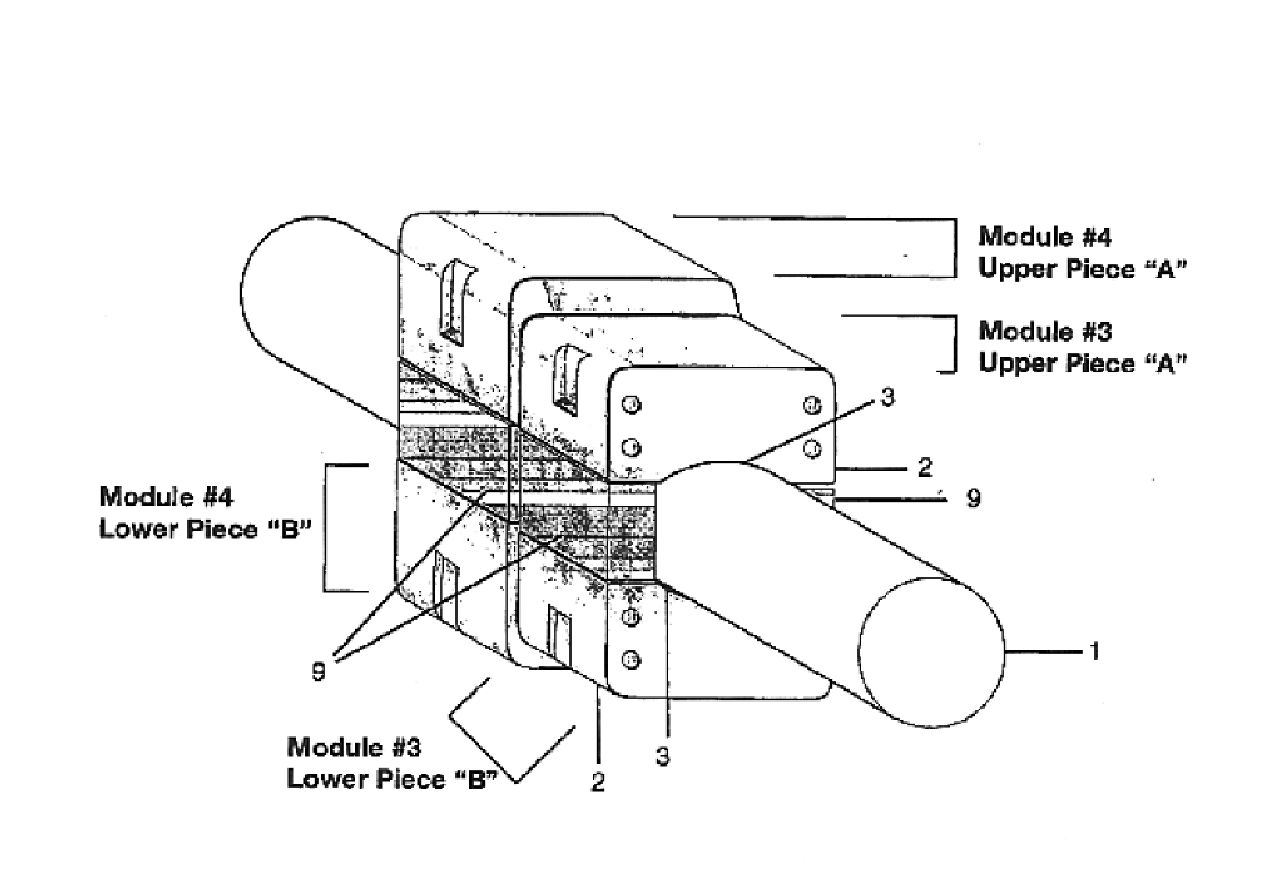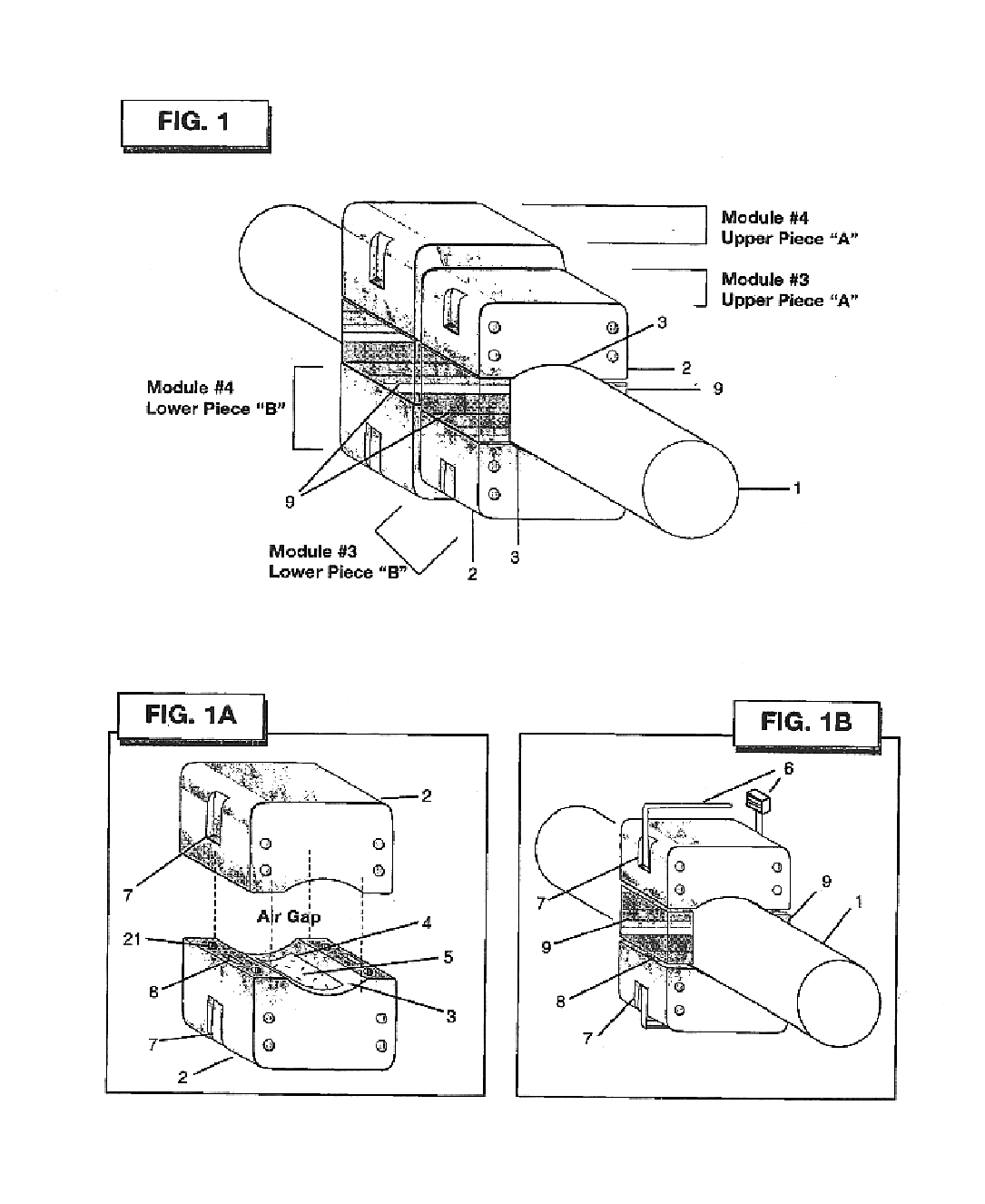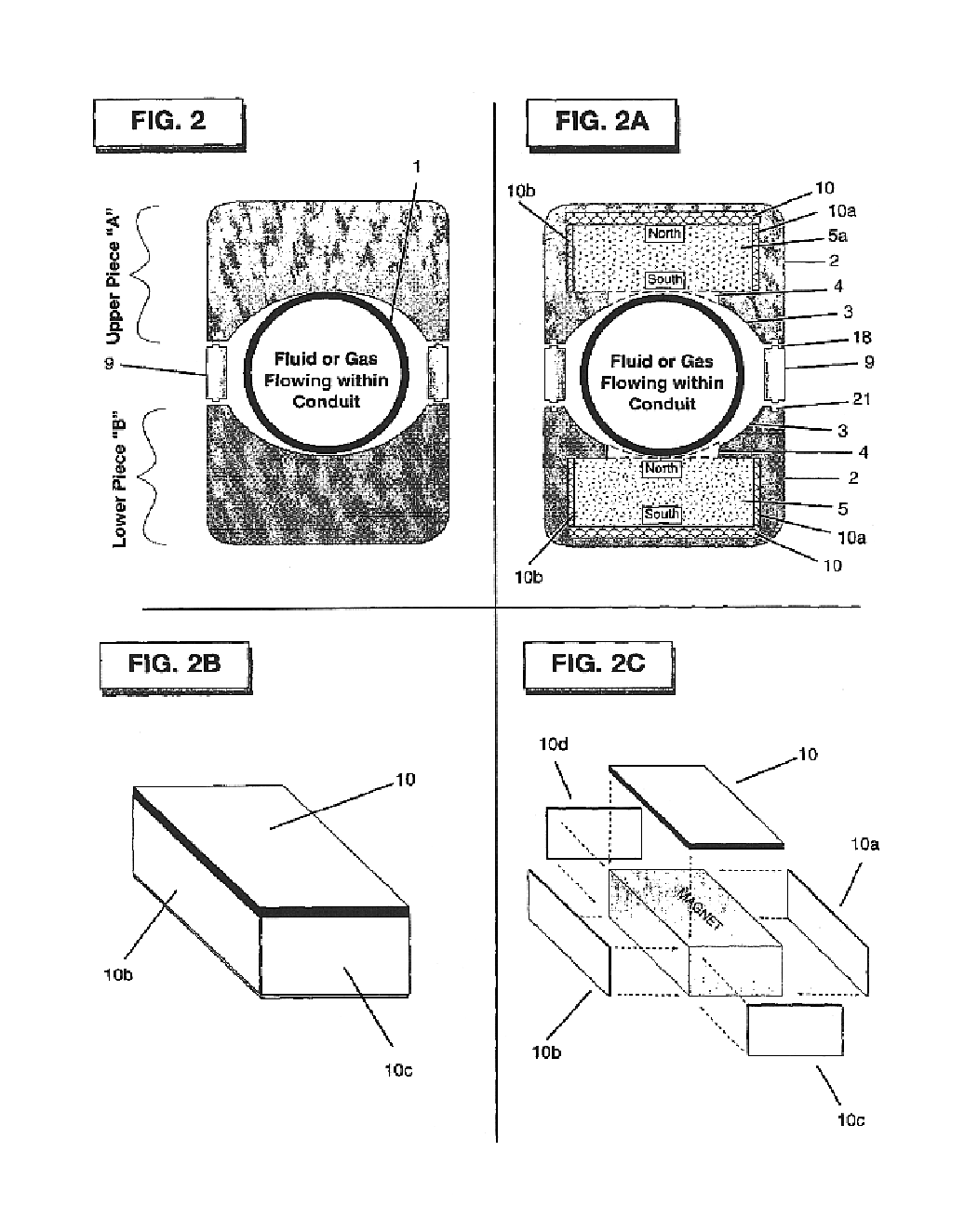Magnetic conditoning of fluids and gases and apparatus therefor
a technology applied in the field of magnetic conditoning of fluids and gases and apparatus therefor, can solve the problems of sacrificing the initial, beneficial effects of incremental conditioning, affecting the efficiency of incremental conditioning, and the duration between the magnetic conditioning process, so as to improve the specific magnetic field, reduce the propensity for conceptual flux lines, and improve the effect of flux density
- Summary
- Abstract
- Description
- Claims
- Application Information
AI Technical Summary
Benefits of technology
Problems solved by technology
Method used
Image
Examples
Embodiment Construction
Numbers applied to aspects of one Figure that repeat in other Figures are unchanged with respect to the features described.
The invention consists of a minimum of one, 2-piece module (with an upper piece (A) and a lower piece (B), as shown in FIG. 1). Although the total system could be comprised of up to eight modules, as few as one module may be applied effectively. Modules are configured about a conduit 1 or other containment vessel in which a fluid or gas is flowing. Each piece (upper A and lower B) of a modular pair consists of an exterior housing 2 constructed of a non-magnetic material such as, but not limited to plastic. This housing is typically of rectangular proportions, with rounded edges along the top and side faces. Magnets 5 and 5a that are contained within the housing are also of similar shape (magnet 5 is shown in FIG. 1A). The magnets of a module are aligned with respect to polarity to create a mono-directional magnetic field normal to the direction of flow of the su...
PUM
| Property | Measurement | Unit |
|---|---|---|
| temperature | aaaaa | aaaaa |
| distance | aaaaa | aaaaa |
| distance | aaaaa | aaaaa |
Abstract
Description
Claims
Application Information
 Login to View More
Login to View More - R&D
- Intellectual Property
- Life Sciences
- Materials
- Tech Scout
- Unparalleled Data Quality
- Higher Quality Content
- 60% Fewer Hallucinations
Browse by: Latest US Patents, China's latest patents, Technical Efficacy Thesaurus, Application Domain, Technology Topic, Popular Technical Reports.
© 2025 PatSnap. All rights reserved.Legal|Privacy policy|Modern Slavery Act Transparency Statement|Sitemap|About US| Contact US: help@patsnap.com



